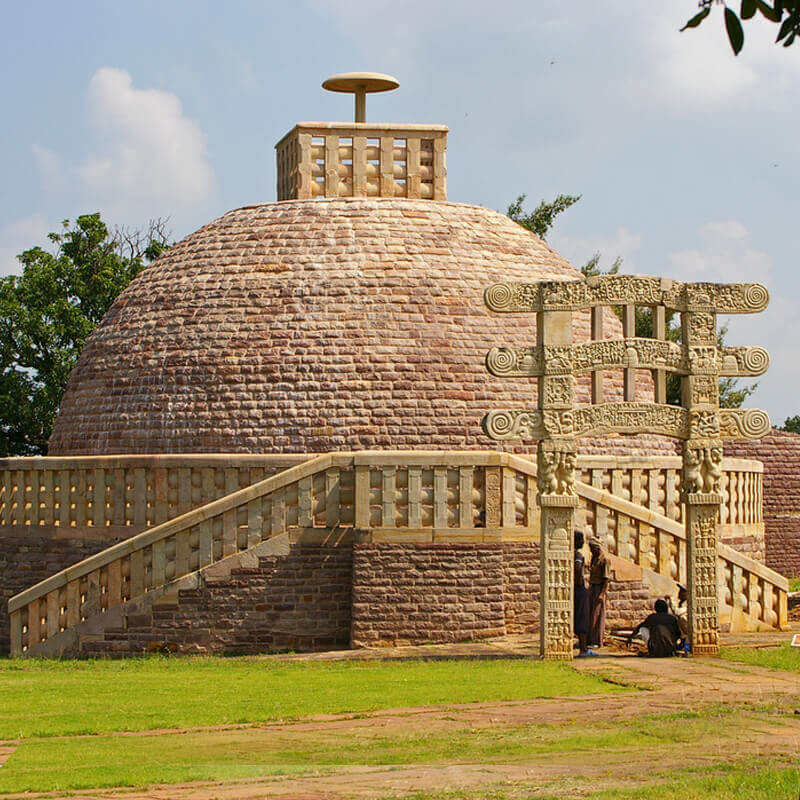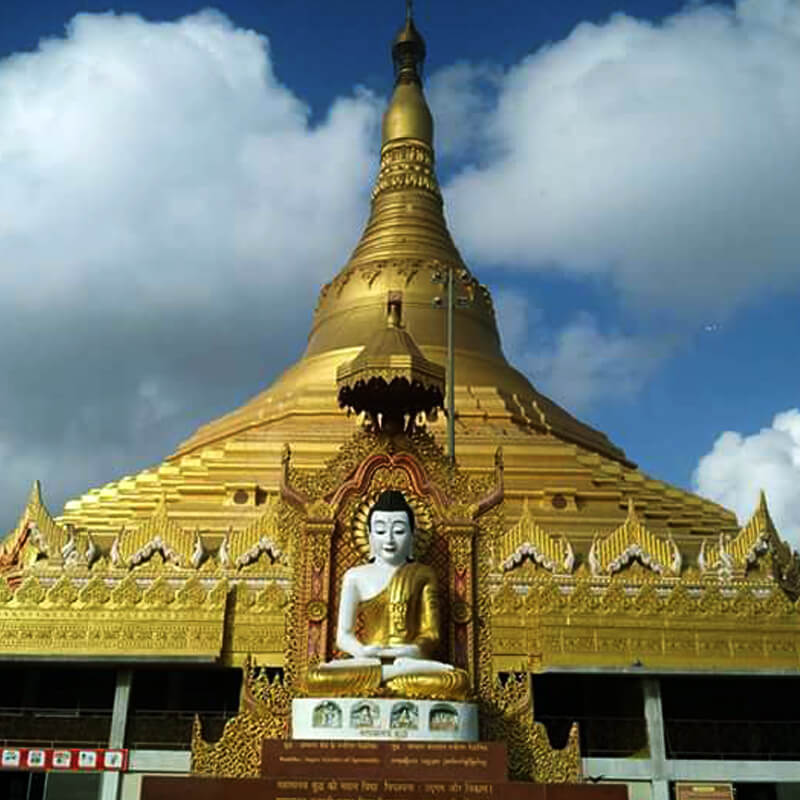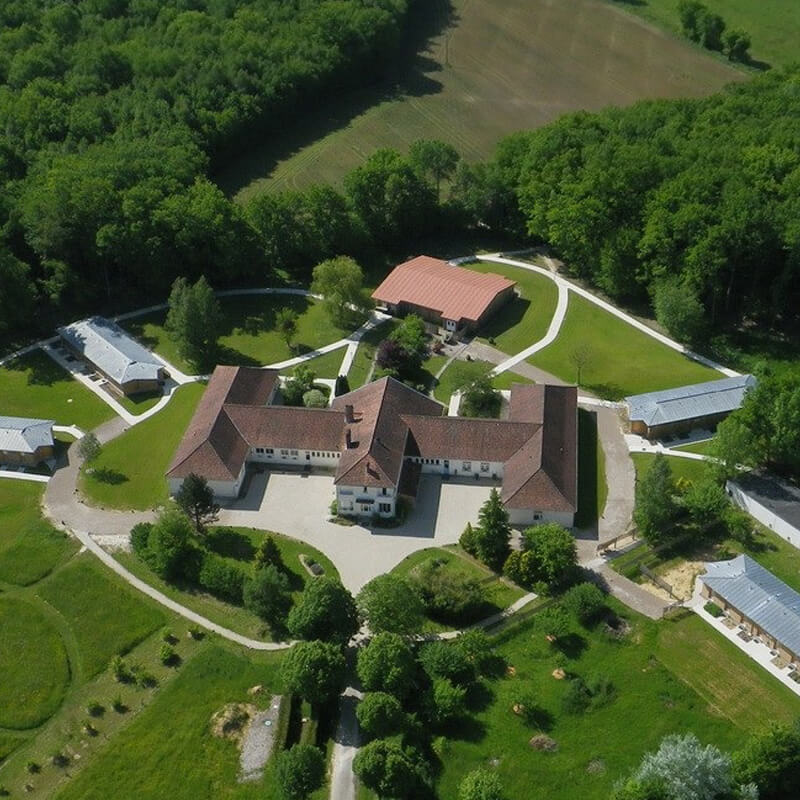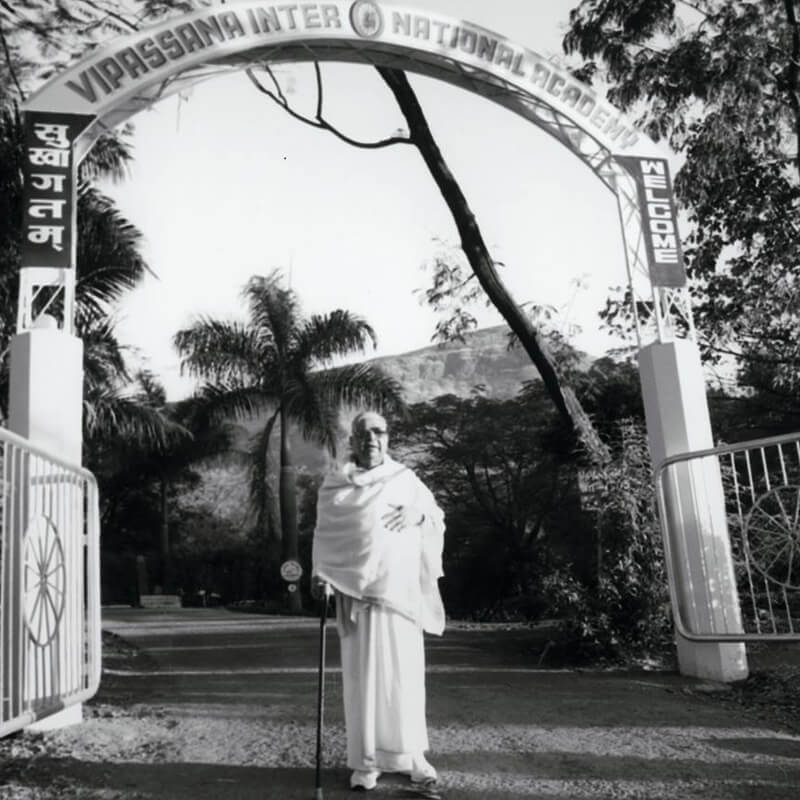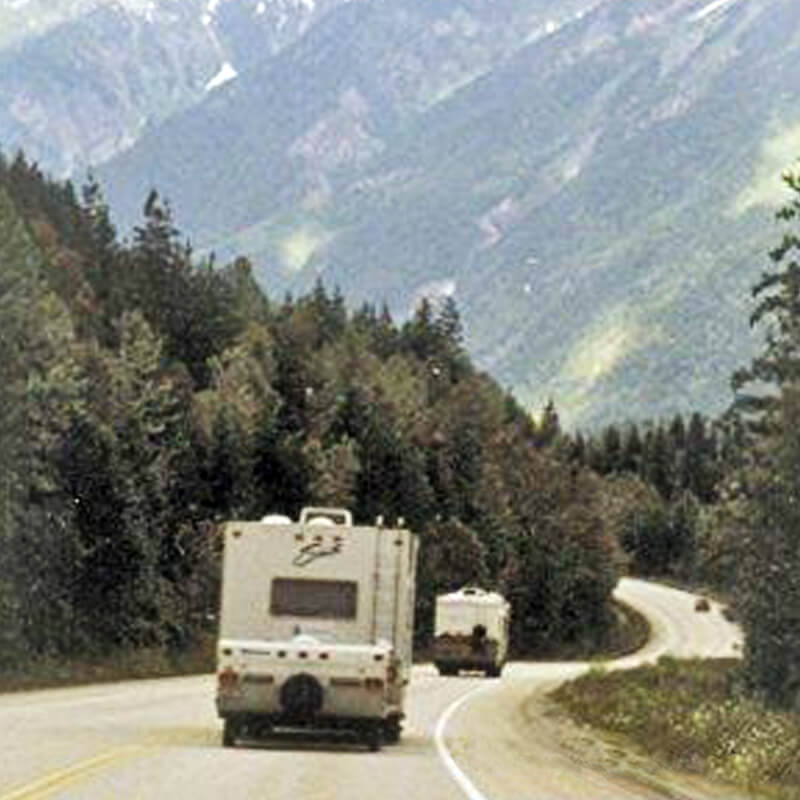(Today, every Vipassana course is conducted by the assistant teachers of S. N. Goenka using audio visual instructions and discourses of Mr. Goenka. The following article contains information on start of this concept of recording and the amount of systematic efforts put by old students to bring it to perfection)
When Goenkaji appointed the first assistant teachers, his hope was that they would gradually develop to the point where they were able to conduct courses entirely on their own. Afterwards, to maintain the uniformity of the teaching, he decided, they would use recordings of his own instructions, discourses and chanting.
To do that, they had to have recordings. A few did exist. From the early 1970s, students had used the recently introduced cassette tape technology to record Goenkaji. But the equipment was not professional quality, and the people doing the recording generally had little experience. The results were often uneven.
Another problem was that the recording had been done piecemeal. No one had ever set out to systematically tape everything Goenkaji said or chanted during a 10-day course. A set of evening talks might be patched together from several courses, and instructions or chantings might have been recorded on still other occasions. As a result, there might be gaps or repetitions.
This had never seemed to matter very much. Certainly, recordings of the evening talks were played in every course: Goenkaji would give the talk in Hindi or English, and students could listen to a tape of the same discourse in the other language. But tapes of instructions were rarely played. Even when students sat self-courses at Dhamma Giri in the early days, they listened to the main instructions for Anapana, Vipassana and Metta, but otherwise they were on their own.
Self-courses were for old students, though. Assistant teachers needed to be able to serve both old students and people coming for the first time. And it was important for the students to receive the teaching in full, exactly as Goenkaji presented it in a 10-day course.
That, at least, was the ideal. The question was how to make it reality.
A Few Tapes in a Paper Bag
As often happens, when the need arose, someone stepped forward to meet the need. That person was Thomas Crisman.
An American from Texas, Thomas had learned another type of Vipassana several years before. When Goenkaji came to North America in the summer of 1980, Thomas decided to join a 10-day course in Chicago. It was a turning point for him. He made up his mind to leave his flourishing legal practice. The following December he left for India, unsure whether he would ever return.
That winter he told Goenkaji that he wanted to give up working and just meditate. The response surprised him. As Thomas recalls, Goenkaji said, “No, you can’t do that.
There are people whose rights are being violated. They need help and you need to help them. And secondly, there are people who have the pāramīs [good qualities] to experience and practice Dhamma, but unless they come across somebody of their own background who is doing it and can tell them about it, they’ll never get it. You have a responsibility to be a connection to Dhamma for those people.”
Thomas accepted that guidance, went back home and resumed his legal career. But in December 1981, he returned to India to meditate at Dhamma Giri. And early in 1982, after sitting 30 days, he was one of the students who accompanied Goenkaji on a visit to the sites associated with the life of the Buddha—a kind of traveling meditation course.
This was a few weeks after the appointment of the first assistant teachers, and several of them had come along. When the group reached Bodh Gaya, Goenkaji arranged for a 10-day course to be held in mid-March at the Burmese Vihara, where he himself had spent so much of his time in the early 1970s. The starting date was less than a month away. Since no one else was available, Goenkaji asked Bill Hart to conduct the course.
Not long afterwards, Thomas remembers a scene in a train station, as Bill was parting from the group and heading back to Dhamma Giri to prepare for the course: “He had with him a little paper bag that had in it a copy of a Vipassana tape—just an audio cassette tape—an Anapana tape and some discourses. And that was it. I remember thinking at the time, ‘That’s just terrifying to me. This guy has to go and represent our teacher, and actually conduct courses for people, and that’s all he’s got. The rest of it, he’s going to have to wing it.’”
In fact, the situation wasn’t quite so dire. At Dhamma Giri there was a set of instruction tapes. Carefully guarding these and the other recordings with him, Bill returned to Bodh Gaya feeling that he had all the necessary material for conducting a course.
He learned differently on the evening of Day One. After the discourse there was a short break and then the students returned to the hall for a final sitting. Bill reached over and pressed the play button on the tape player. All that came out of the speakers was a faint hiss. And so, on the first day of the first course he had ever conducted—the first course ever conducted by an assistant teacher—Bill had to do as Goenkaji had told the assistants: since the tape had failed, he had to give the instructions himself. He had to keep doing it every evening of the course because the tapes he had brought with him did not include the evening instructions.
Mission: to record the entire teaching
Meanwhile, Thomas had traveled with Goenkaji back to Bombay. On the journey, he presented the idea of making a comprehensive set of recordings—both audio and video— to capture the entire teaching from a 10-day course. Goenkaji was hesitant at first: he was concerned that the recording process would disturb meditators. But Thomas assured him that the disturbance could be minimized. “I’ll be just like a little mouse,” he said.
Goenkaji agreed to give it a try. And so, in late May of 1982, when students entered the meditation tent for the start of Goenkaji’s course in Mendocino, California, they saw an unusual sight: Goenkaji sitting on the Dhamma seat, with Thomas close beside him on the floor, wearing earphones and surrounded by recording equipment.
Over the next four years, that sight was to become very familiar. Through 1986, Thomas made audio and video recordings at the English-language courses taught by Goenkaji every summer in the United States. And every winter he traveled to India to record Hindi-English courses.
If recording presented difficulties in America, it was a far greater challenge in India. In those days the country was much less advanced than today, and at Dhamma Giri the power supply often fluctuated or failed. A meditator who assisted Thomas recalls, “A mountain of equipment arrived in two big steamer trunks from Texas and found its way into the main meditation hall at Dhamma Giri. There were special lights for the videotaping and a huge array of car batteries to take care of the inevitable power outages.”
With so many variables, it was all too easy for something to go wrong. Sometimes the equipment proved faulty; sometimes it was the placement of the microphone; sometimes the power went off; and sometimes rain on a tent roof forced Goenkaji to shout. This was why it was necessary to keep recording year after year.
And the recording was only half of the work. After weeks of taping in America or India, Thomas would return home with reels of raw sound recordings. Now came more weeks of work editing and indexing the recordings, and then transferring them to 90-minute audio cassettes. It took 42 cassettes to contain all the audio material recorded in one 10-day course. This was the master set, to be used only in making copies for distribution. In those days each assistant traveled with a personal set of tapes kept in a small attaché case. Thomas and his wife Tina copied the tapes themselves, filled the cases and then arranged for them to be delivered to their destinations.
For the video recordings, the process was similar: Thomas added a title and ending to each, created a master in VHS format, and then used it to make copies. There were sets for the different systems used in North America, Asia and some European countries.
Every time Thomas re-recorded a course, the entire process had to be repeated and a new “edition” created. It was only with the sixth edition that Thomas was at last satisfied.
The English and Hindi-English audio recordings made in those years are still in use today at all 10-day courses.
Later, many other people got involved in the recording work. An equally big job was translating material and then recording it in other languages. These efforts have given us the sets of recordings now used around the world on courses.
“This could work”
In 1982, the first attempt at that course in Mendocino could not be expected to produce a definitive set of recordings. Fine-tuning was needed; that was clear. But it was a task for the future. Right now there was an immediate need for the tapes. Within a few days the first assistant teacher course in the West was scheduled to begin in British Columbia. To conduct it, Graham and Anne Gambie had flown in from Australia. They had gone first to California to help on Goenkaji’s course, and also to obtain the teaching materials. On the last evening and night, they spent long hours copying the recordings made by Thomas onto cassettes that they would take with them.
Next day they flew north to Vancouver and drove straight to the course site about an hour away: a children’s camp within a regional park. Eight men and 10 women had signed up to sit; about half of them had done courses before and half were new to Vipassana.
The course went smoothly, with no incidents apart from some people wandering on to the site from a nearby beach. Graham had served on so many courses in India and Australia; he was never in any doubt about what to do. Anne was a reassuring presence. If there were any questions it was easy to call Goenkaji, who was then teaching a course in the eastern USA. And day by day, sitting after sitting, there were the brand new recordings brought from California, delivering Goenkaji’s own words to the students.
After 10 days, as always there were many smiling faces. One of the participants recalls lingering a little at the end of the course to say goodbye:
A student was waiting with a question for Graham. He asked, “I’m still not sure I understand about anicca. What does Goenkaji mean by it?” Almost offhandedly Graham replied, “It’s very simple. Just focus your attention on your hands. Do you feel some tingling there? That’s anicca. Anything that is dynamic in the body is anicca.” And then he got in the car and drove away.
This was so different from Goenkaji. On the one hand, Graham was open and approachable, like a buddy. On the other hand, we really respected the body of experience that he brought to the practice. There was a growing sense of respect for the assistants just because they were there as representatives of the Teacher.
I came away thinking, “Hey, this could work.”
Thirty years and several hundred thousand students later, there is no doubt that it does work.
Even for very old students of Goenkaji, the recordings continue to be astonishing for their clarity and immediacy. It’s no wonder that Goenkaji eventually decided that the recordings should be used indefinitely on courses in this tradition. This is the best way to ensure that long into the future, people around the world will continue to receive the authentic teaching as he himself presented it, without addition or subtraction—the teaching of liberation.
Where are they now?
Thomas Crisman and his wife Tina are Acariyas serving the Southwest Vipassana Meditation Center in Texas, USA. Thomas also helps with legal and organizational matters affecting worldwide Vipassana activities. From the early 1990s, he took the lead in establishing an Internet presence for the teaching of Goenkaji, and he continues to be responsible for the worldwide www.dhamma.org family of websites.
Bill Hart is an Acariya serving Canada and Israel.
Graham Gambie passed away in 1986 at the age of 49. His wife, now Anne Doneman, is an Acariya serving Dhamma Rasmi in Queensland, Australia.
(Courtesy: International Vipassana Newsletter, June 2012 issue)

